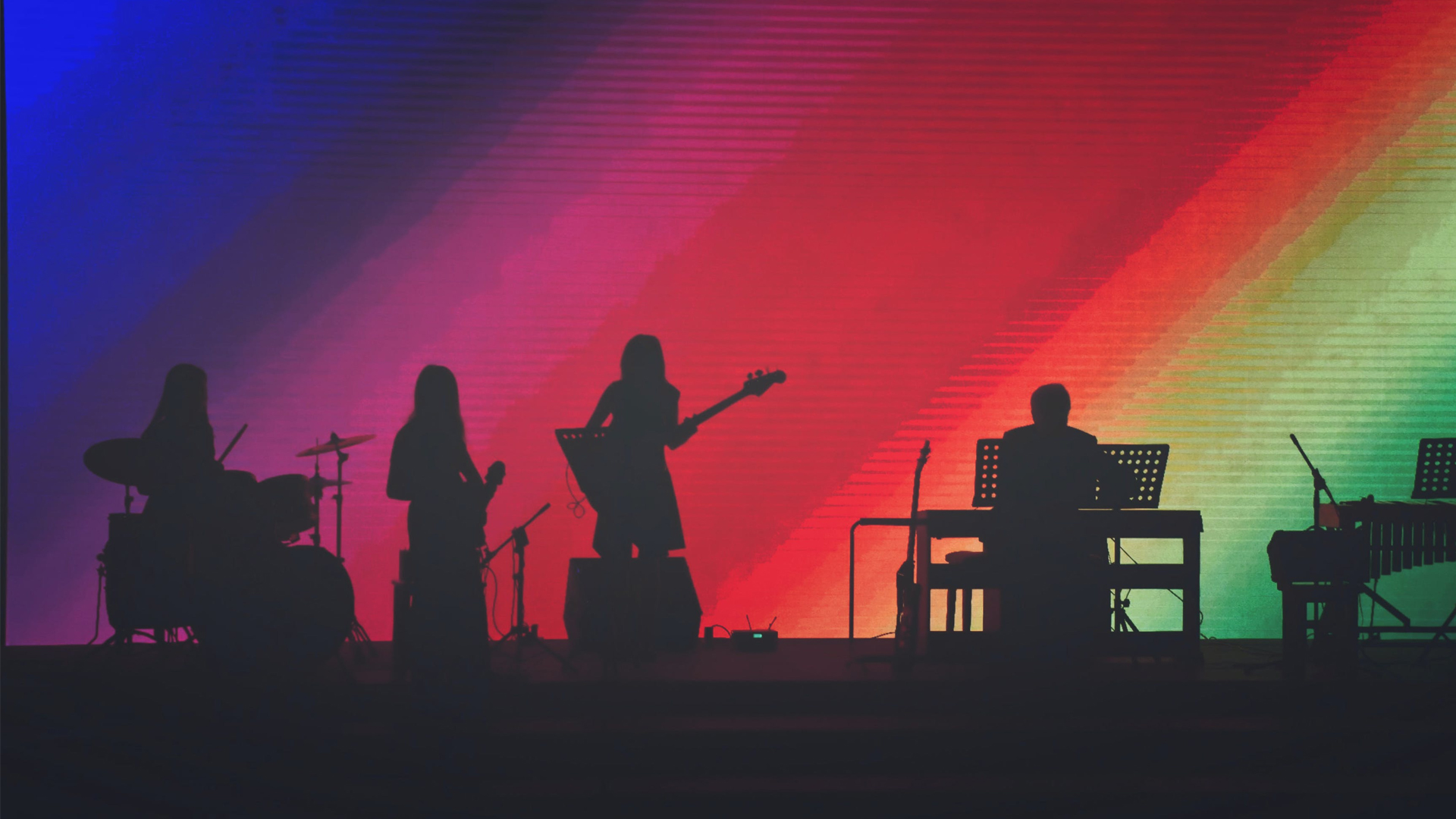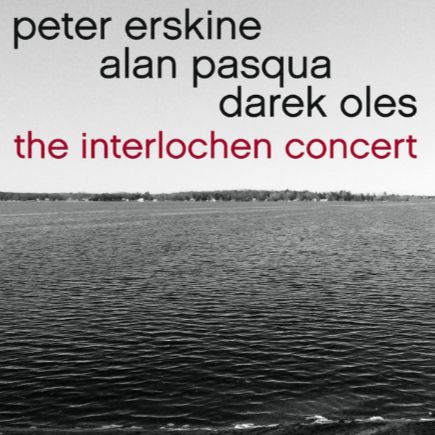I Hear a Rhapsody: à la croisée du swing et de la modernité
Composée en 1940 par George Fragos, Jack Baker et Dick Gasparre, I Hear a Rhapsody connaît un succès immédiat, figurant dans le top 10 des classements pour trois artistes majeurs: Charlie Barnet, Jimmy Dorsey et Dinah Shore. Ce standard, populaire dès sa création, a traversé les décennies grâce à des interprétations marquantes signées Frank Sinatra, Bill Evans ou encore John Coltrane, qui en ont révélé toute la richesse harmonique et expressive.
La chanson naît à une période charnière pour le jazz. Dans les années 1940, le swing règne encore sur les grandes scènes, mais les contours du bebop commencent à se dessiner. Les musiciens expérimentent de nouvelles formes, plus complexes, plus libres, ouvrant la voie à une révolution musicale. I Hear a Rhapsody s’inscrit pleinement dans ce contexte : sa mélodie fluide et accessible dissimule une structure harmonique raffinée, offrant aux interprètes une matière propice à l’invention et à la réinterprétation.
Au-delà de son parcours musical, la chanson s’est aussi inscrite dans l’histoire du cinéma: on l’entend dans Clash by Night (Le démon s’éveille la nuit), réalisé en 1952 par Fritz Lang, avec Barbara Stanwyck et Robert Ryan.
Maîtrise, complicité et inspiration en concert
Le 8 avril 2009, au Corson Auditorium d’Interlochen, dans le Michigan, le batteur Peter Erskine retrouve les lieux de sa jeunesse pour une performance d’une rare intensité, captée sur l’album The Interlochen Concert. À la tête d’un trio d’exception, il s’associe au pianiste Alan Pasqua et au contrebassiste Darek Oleszkiewicz pour une exploration musicale à la fois raffinée, inventive et profondément expressive.
Peter Erskine, figure emblématique du jazz contemporain, y déploie toute l’étendue de sa palette rythmique, combinant précision, finesse et imagination dans un jeu aussi subtil que dynamique. À ses côtés, Alan Pasqua développe un discours pianistique élégant, harmonieux et fluide, tandis que Darek Oleszkiewicz apporte une contrebasse à la fois lyrique, structurante et d’une grande justesse d’intonation.
Ce concert s’inscrit dans le cadre d’un prestigieux festival, réputé pour la qualité de ses programmations et l’exigence de son public. L’événement revêt également une dimension personnelle pour Erskine, qui avait obtenu son diplôme d’études secondaires à l’Interlochen Arts Academy en 1971. Il en résulte un concert marqué par la spontanéité, la maîtrise technique et une profonde sensibilité musicale, témoignage d’un trio au sommet de son art.
I Hear a Rhapsody: en la encrucijada entre el swing y la modernidad
Compuesta en 1940 por George Fragos, Jack Baker y Dick Gasparre, I Hear a Rhapsody alcanzó un éxito inmediato, situándose en el top 10 de las listas con tres artistas destacados: Charlie Barnet, Jimmy Dorsey y Dinah Shore. Este estándar, popular desde su creación, ha perdurado a lo largo de las décadas gracias a interpretaciones memorables de Frank Sinatra, Bill Evans o John Coltrane, que supieron revelar toda su riqueza armónica y expresiva.
La canción nace en un momento clave para el jazz. Durante los años 40, el swing seguía dominando los escenarios, pero ya se vislumbraban los contornos del bebop. Los músicos empezaban a explorar formas más libres y complejas, preparando el terreno para una verdadera revolución estilística. I Hear a Rhapsody encarna perfectamente este contexto: su melodía fluida y accesible esconde una estructura armónica sofisticada, ideal para la improvisación y la reinvención.
Más allá de su recorrido musical, la canción también dejó huella en el cine: aparece en Clash by Night (Encuentro en la noche), dirigida en 1952 por Fritz Lang, con Barbara Stanwyck y Robert Ryan.
Maestría, complicidad e inspiración en concierto
El 8 de abril de 2009, en el Corson Auditorium de Interlochen, Michigan, el baterista Peter Erskine regresó a los escenarios de su juventud para ofrecer una actuación de extraordinaria intensidad, registrada en el álbum The Interlochen Concert. Al frente de un trío excepcional, se une al pianista Alan Pasqua y al contrabajista Darek Oleszkiewicz para una exploración musical refinada, inventiva y profundamente expresiva.
Figura emblemática del jazz contemporáneo, Peter Erskine despliega aquí toda su paleta rítmica, combinando precisión, sutileza e imaginación en un estilo tan delicado como enérgico. A su lado, Alan Pasqua construye un discurso pianístico elegante, fluido y armónico, mientras que Darek Oleszkiewicz aporta un contrabajo lírico, sólido y afinado con una notable precisión.
Este concierto se enmarca en un prestigioso festival, reconocido por la calidad de su programación y por la exigencia de su público. El evento tiene además un significado personal para Erskine, quien se graduó en la Interlochen Arts Academy en 1971. El resultado es un concierto marcado por la espontaneidad, la maestría técnica y una profunda sensibilidad musical, testimonio de un trío en la cima de su arte.
I Hear a Rhapsody: tra swing e modernità
Composta nel 1940 da George Fragos, Jack Baker e Dick Gasparre, I Hear a Rhapsody ottenne un successo immediato, entrando nella top 10 con tre artisti di spicco: Charlie Barnet, Jimmy Dorsey e Dinah Shore. Questo standard, popolare fin dagli esordi, ha attraversato le epoche grazie a interpretazioni memorabili di Frank Sinatra, Bill Evans o John Coltrane, che ne hanno rivelato tutta la ricchezza armonica ed espressiva.
La canzone nasce in un momento cruciale per il jazz. Negli anni Quaranta, lo swing dominava ancora la scena, ma il bebop cominciava a delinearsi. I musicisti sperimentavano strutture più complesse e libere, dando vita a una rivoluzione musicale. I Hear a Rhapsody si inserisce perfettamente in questo contesto: una melodia fluida e accessibile si fonde con un’armonia raffinata, offrendo agli interpreti uno spazio ideale per l’invenzione e la reinterpretazione.
Oltre alla sua storia musicale, il brano ha lasciato il segno anche nel cinema: si ascolta in Clash by Night (La confessione della signora Doyle), film del 1952 diretto da Fritz Lang con Barbara Stanwyck e Robert Ryan.
Padronanza, complicità e ispirazione in concerto
L’8 aprile 2009, presso il Corson Auditorium di Interlochen, nel Michigan, il batterista Peter Erskine è tornato nei luoghi della sua giovinezza per una performance di rara intensità, documentata nell’album The Interlochen Concert. Alla guida di un trio d’eccezione, si unisce al pianista Alan Pasqua e al contrabbassista Darek Oleszkiewicz per un’esplorazione musicale raffinata, creativa e profondamente espressiva.
Figura di riferimento del jazz contemporaneo, Peter Erskine mette in mostra tutta la sua gamma ritmica, combinando precisione, finezza e immaginazione in uno stile al tempo stesso sottile ed energico. Al suo fianco, Alan Pasqua sviluppa un discorso pianistico elegante, armonico e fluido, mentre Darek Oleszkiewicz offre un contrabbasso lirico, strutturato e intonato con grande sensibilità.
Il concerto si inserisce nell’ambito di un festival prestigioso, rinomato per la qualità delle sue programmazioni e per l’esigente livello del pubblico. L’evento assume anche un valore personale per Erskine, che si diplomò alla Interlochen Arts Academy nel 1971. Ne risulta un concerto segnato da spontaneità, padronanza tecnica e una profonda sensibilità musicale, testimonianza di un trio al vertice della propria arte.
I Hear a Rhapsody: at the crossroads of swing and modernity
Composed in 1940 by George Fragos, Jack Baker, and Dick Gasparre, I Hear a Rhapsody met with immediate success, reaching the top 10 charts with three major artists: Charlie Barnet, Jimmy Dorsey, and Dinah Shore. Popular from the outset, this standard has endured through the decades thanks to memorable interpretations by Frank Sinatra, Bill Evans, and John Coltrane, who brought out its full harmonic and expressive richness.
The song emerged at a pivotal moment for jazz. In the 1940s, swing still reigned supreme, but the outlines of bebop were beginning to take shape. Musicians were exploring freer, more complex forms, paving the way for a stylistic revolution. I Hear a Rhapsody fits squarely within this context: its flowing, accessible melody conceals a refined harmonic structure, offering fertile ground for improvisation and reinterpretation.
Beyond its musical journey, the song also entered the realm of cinema: it can be heard in Clash by Night (1952), directed by Fritz Lang and starring Barbara Stanwyck and Robert Ryan.
Mastery, complicity, and inspiration in concert
On April 8, 2009, at the Corson Auditorium in Interlochen, Michigan, drummer Peter Erskine returned to the setting of his youth for a performance of remarkable intensity, captured on the album The Interlochen Concert. Leading an outstanding trio, he joined forces with pianist Alan Pasqua and bassist Darek Oleszkiewicz for a musical journey that was both refined and inventive, deeply expressive and richly nuanced.
A prominent figure in contemporary jazz, Peter Erskine showcased the full scope of his rhythmic artistry, blending precision, subtlety, and imagination in a playing style that is both delicate and dynamic. Alongside him, Alan Pasqua delivered an elegant, fluid, and harmonically rich piano voice, while Darek Oleszkiewicz contributed a lyrical and grounded bass with remarkable intonation and depth.
This concert took place as part of a prestigious festival, known for the high quality of its programming and the discernment of its audience. The occasion held special personal significance for Erskine, who had graduated from the Interlochen Arts Academy in 1971. The result is a concert defined by spontaneity, technical mastery, and deep musical sensitivity—a testament to a trio at the height of its artistry.


